Where U.S. Organic Produce Premiums are Highest
Farmers and retailers looking to expand into organic apples, cucumbers, strawberries, and tomatoes can use insights from a new study on where organic premiums for the produce matches consumer demand. Willingness of consumers to pay a premium for organic produce varies across parts of the U.S.
The study was published in the International Journal of Agricultural Economics last month, and its trends can also inform consumers of where organic produce can be purchased in large quantities for a lower price.
Researchers collected monthly retail price data on apples, cucumbers, strawberries, and tomatoes from the USDA, including the produce variety, region, season, package size, and whether it was organic. Since the study’s main goal was to learn the organic price premium for each region, the study divided the U.S. into eight distinct locations.
From a retail perspective, package size, variety, and organic can influence price premiums. From a grower perspective, premiums for organic strawberries were higher than nonorganic in most parts of the country except for Hawaii and Alaska. Season was important for apples and strawberries, but not for cucumbers and tomatoes.
Organic strawberry premiums were 21% higher in winter than summer months, while two-pound strawberry package premiums were 10% less when compared to one-pound packages, indicating a smaller margin for price discrimination.
With a long season, tomato growers should consider locating themselves in the Southwest and Southeast regions of the U.S. in light of favorable growing conditions and high demand. Organic tomato premiums are 11 to 15% higher in the Northeast, Northwest, Southeast, and South-Central regions of the U.S. Although organic and nonorganic tomato 'Heirloom' varieties carry higher prices, organic premiums for tomatoes are highest for 'Vine Ripe' varieties.
Cucumbers, like tomatoes, can be grown indoors year-round and are not influenced by season. Varieties that are not 'Long Seedless' had 26% higher premiums for organic. Cucumbers sold by the pound had 31% higher premiums than those sold by count. Along with tomatoes, locating in the Southwest and Southeast regions is favorable for cucumber production because of climate and demand.
Apples premiums are influenced by region, season, and package quantity, with five-pound bags 40% lower in organic premiums when compared to a one pound bag. Highest premiums for organic apples are in fall when nonorganic apples flood the market. Premiums in the Southwest region of the U.S. for organic apples were 15% higher. Gala, Golden Delicious, and Fuji varieties fetched the highest premiums for organic.
Growing awareness from consumers over the years on how and where their food is grown is coupled with a greater demand for organic produce, and apples and strawberries are desirable in requiring little to no preparation. Organic produce alone makes up 40% of U.S. organic food sales and reached $20 billion in 2020, up from about $1 billion in 1997, according to the USDA’s Economic Research Service and data from the Nutrition Business Journal. Higher demand for organic food products can translate to higher prices for consumers.
The study authors did not consider all varieties for strawberries and cucumbers and cite it as a limitation of the analysis. The study did not include production costs and suggests that a survey could help capture the views of farmers and consumers.
Learn more about the science and benefits of organic farming through The Organic Center's recipes: https://www.organic-center.org/recipes/universal-tomato-sauce


